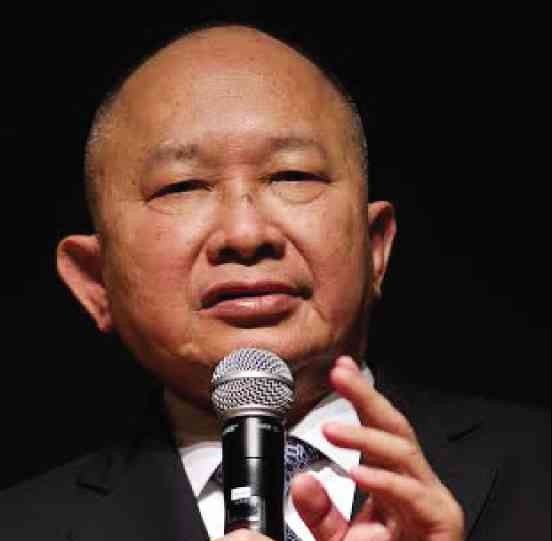“I’ve never learned kung fu. I’ve never fired a real gun. I design action scenes using my imagination,” said legendary Hong Kong director John Woo when asked how he managed to create those gripping action sequences in films like “Hard Boiled,” “Face/Off” and “Mission: Impossible 2.”
Woo, whose “A Better Tomorrow” (1998) launched his career as an action film director, added: “I must say that my kind of action is pretty much like a musical. When people are running, fighting and shooting at each other on the set, they seem like they’re dancing! Musicals have so much influence on me. I grew up patronizing them.”
Woo, now 69, says he always listened to music when choreographing action scenes. “I like making scenes look and sound like jazz—the tempo, editing and body movement. Bob Fosse is my main influence. He was a good director, dancer and singer.” Fosse directed the 1979 American screen musical, “All That Jazz.”
Woo was recently in Japan to accept his Samurai Award at the 2015 Tokyo International Film Festival. He and Japanese director Yoji Yamada were honored for their achievements in creating groundbreaking films at a ceremony held at the Kabuki-za Theater in Tokyo’s Ginza district.
Excerpts from the Inquirer interview:
How important is winning an award to you?
Awards encourage me to make more movies.
From making Hollywood films, you retreated to your home country, China, to make the 2014 movie, “The Crossing.” Why did you make that transition?
I never left Hollywood—I still work there. I may have gone back to China, but I use the same style and adapt the same attitude at work, wherever I am. Humanity is universal. People, no matter what nationality, have the same kind of heart… What I do is always work with people I can trust. Also, I can stay anywhere for a long period of time because I love trying out different kinds of food. I can eat only Philippine food for a month (laughs)!
How often do you watch musicals?
I watch musicals all the time—and repeatedly. I do two things when I choreograph action sequences: I watch old musicals, to get ideas, and Akira Kurosawa films.
In “Seven Samurai,” there’s a fight scene in the rain that I find to be very raw, tragic, dramatic but action-packed. I use that as a sample. The scene gave me a lot of inspiration for the gun-barrel and motorcycle scene in “MI2.”
Do you have pointers for young filmmakers?
It’s easy to say, “Don’t give up the dream,” but what I really want them to do is write their own scripts—it’s good training. If by reading the script, you can picture the whole movie in your mind, that’s a good script! If it’s any good, you just might get it made. The other thing to do is try editing first. That’s the fastest way to becoming a director.
I remember meeting a Japanese guy in Los Angeles. He was very passionate about movies, asked me for some advice and I told him to write his own script. He went back to Japan and made very successful movies!
What’s his name?
Keishi Ohtomo, the writer and director of “Rurouni Kenshin.”
How different is making a film now compared to when you were starting?
Back then, it was just about characters and feelings. Today, I am partial to personal stories. I ask myself, “How can I improve my art?”
Now, I try to do movies in different countries, like Japan, where “Manhunt,” a remake of a 1970 action movie, is set. This criminal-versus-detective story is from a book, but we will be using my style in the new version.
At my age, I still want to learn more about filmmaking—and what better way to do that than to make movies in different territories!
(mcruz@inquirer.com.ph)
